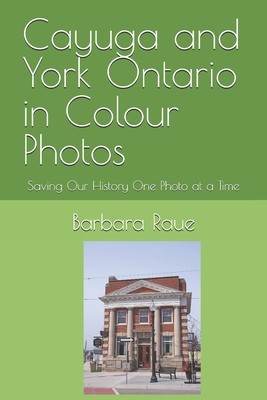
- We will send in 10–14 business days.
- Author: Barbara Raue
- Publisher: INDEPENDENTLY PUBLISHED
- ISBN-10: 1790301548
- ISBN-13: 9781790301546
- Format: 15.2 x 22.9 x 0.5 cm, minkšti viršeliai
- Language: English
- SAVE -10% with code: EXTRA
Reviews
Description
Early patterns of settlement in Haldimand County are still visible in the landscape and architecture, spanning from the pre-Contact era to the proclamation of the Haldimand Land Grant for the Six Nations and the subsequent migration of Loyalist settlers - Americans, largely of German descent and Mennonite tradition. Throughout the 1800s, immigration from the British Isles contributed significantly to the area's development, as did the small but industrious Black community of the late nineteenth century - many descended from ex-slaves of the American South. Since the post-war years of the twentieth century, a significant stream of immigration from the Netherlands has also added to our ever-expanding mosaic of cultural identity, as have the age-old traditions of our Indigenous neighbours - the Six Nations and New Credit communities.Following the American Revolution, Sir Frederick Haldimand, Governor-in-Chief of Canada, granted in 1784 to the Six Nations of the Iroquois a tract of land extending for six miles on both sides of the Grand River from its source to Lake Erie. This grant was made in recognition of their services as allies of the British Crown during the war, and to recompense them for the loss of their former lands in northern New York State. In later years, large areas of this tract, including portions of the present counties of Haldimand, Brant, Waterloo and Wellington, were sold to white settlers.By 1853, Cayuga had lumber yards, a foundry, and a glass factory.At its height, York had twenty businesses that included mills, inns, shoemakers, general stores, blacksmiths, and a lumber yard. It had a two-room school house and two churches.
EXTRA 10 % discount with code: EXTRA
The promotion ends in 21d.07:17:09
The discount code is valid when purchasing from 10 €. Discounts do not stack.
- Author: Barbara Raue
- Publisher: INDEPENDENTLY PUBLISHED
- ISBN-10: 1790301548
- ISBN-13: 9781790301546
- Format: 15.2 x 22.9 x 0.5 cm, minkšti viršeliai
- Language: English English
Early patterns of settlement in Haldimand County are still visible in the landscape and architecture, spanning from the pre-Contact era to the proclamation of the Haldimand Land Grant for the Six Nations and the subsequent migration of Loyalist settlers - Americans, largely of German descent and Mennonite tradition. Throughout the 1800s, immigration from the British Isles contributed significantly to the area's development, as did the small but industrious Black community of the late nineteenth century - many descended from ex-slaves of the American South. Since the post-war years of the twentieth century, a significant stream of immigration from the Netherlands has also added to our ever-expanding mosaic of cultural identity, as have the age-old traditions of our Indigenous neighbours - the Six Nations and New Credit communities.Following the American Revolution, Sir Frederick Haldimand, Governor-in-Chief of Canada, granted in 1784 to the Six Nations of the Iroquois a tract of land extending for six miles on both sides of the Grand River from its source to Lake Erie. This grant was made in recognition of their services as allies of the British Crown during the war, and to recompense them for the loss of their former lands in northern New York State. In later years, large areas of this tract, including portions of the present counties of Haldimand, Brant, Waterloo and Wellington, were sold to white settlers.By 1853, Cayuga had lumber yards, a foundry, and a glass factory.At its height, York had twenty businesses that included mills, inns, shoemakers, general stores, blacksmiths, and a lumber yard. It had a two-room school house and two churches.


Reviews